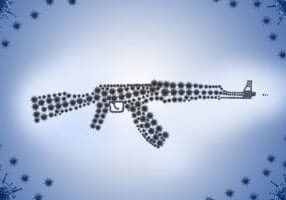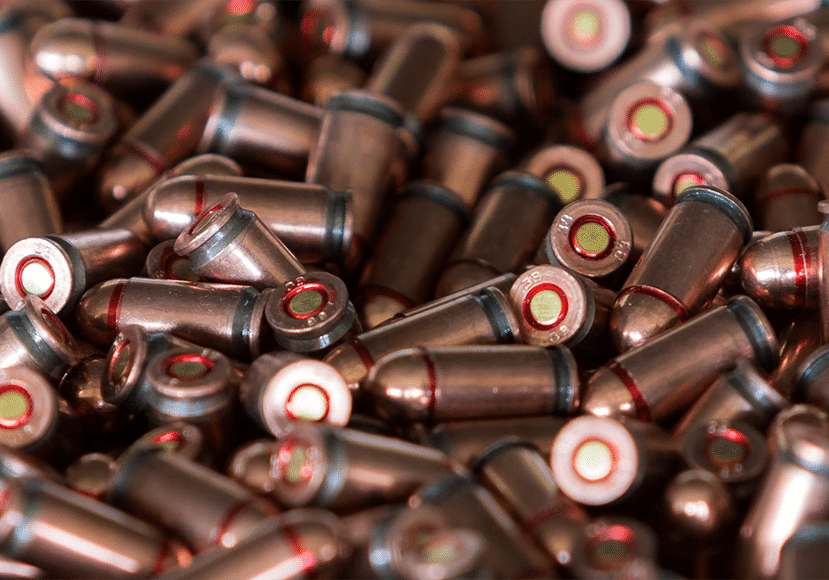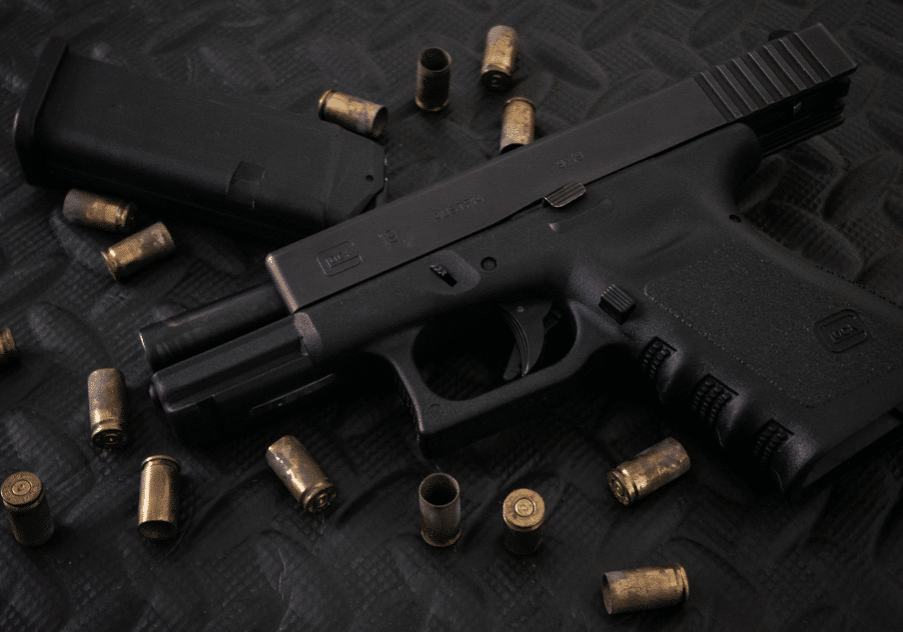9mm vs .45 ACP – Performance Comparison and History
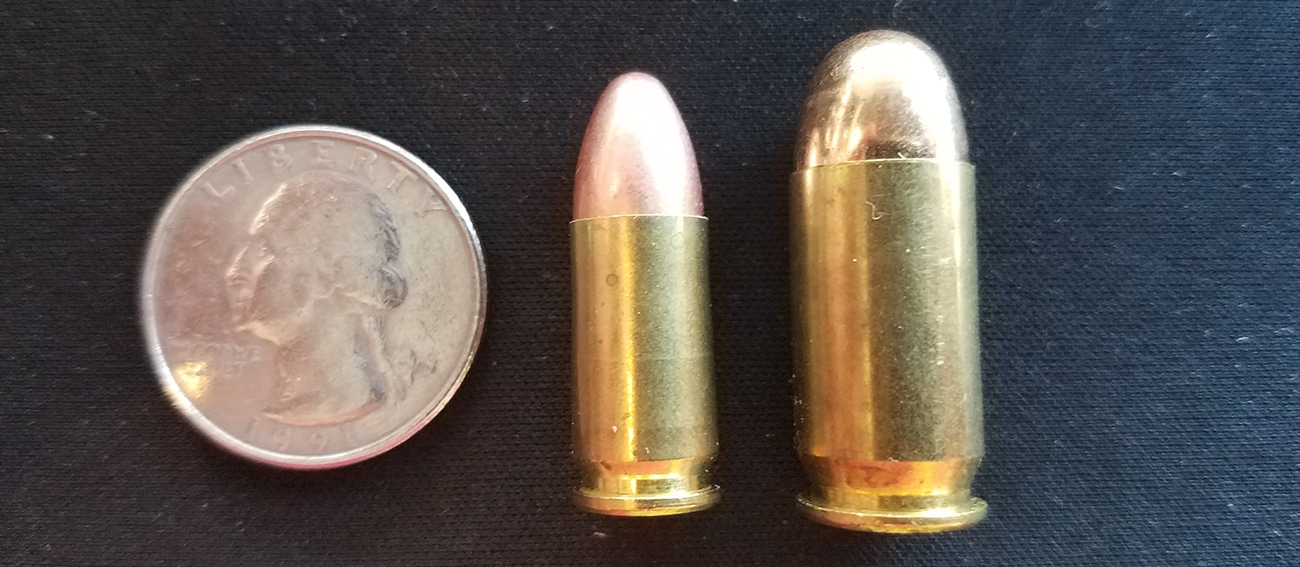
Which is better when comparing 9mm vs .45 ACP (.45 Auto) handgun calibers? This question has sparked an ongoing debate within the gun community going back as long as anyone can remember.
Those in favor of the smaller 9mm caliber cartridge make the case that the 9mm’s higher capacity and accuracy make it the caliber of choice for handguns, while those on the other side of the debate will emphasize the stopping power of the larger .45 ACP. As we will be discussing further, this debate has not been limited to gun carrying civilians, but has extended all the way up the highest branches of the US military, law enforcement, and the FBI.
Despite the division between their supporters, both the 9mm and .45 have rightly solidified their places in the modern world of concealed carry firearms and continue to serve as staples in the greater handgun market.
In this article, we will be exploring the backgrounds of both the 9mm and the .45 ACP before analyzing each caliber’s similarities, differences, and trade-offs.
9mm Background
9mm or 9x19 Parabellum firearm cartridges were originally introduced by German weapons manufacturer Deutsche Waffen und Munitionsfabriken (German Weapons and Munitions Factory, aka DWM) in 1902. ‘Parabellum’ refers to the Latin phrase “Si vis pacem, para bellum,” which translates to, “If you seek peace, prepare for war.” The phrase has served as the longtime motto of DWM.
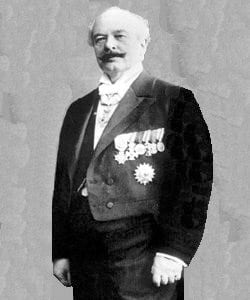
Georg Luger
Designed by Georg Luger for the DWM’s Luger semi-automatic pistol, 9mm quickly became one of the most popular cartridges on the market following its release.
Mass adoption of 9mm cartridge firearms began over the course of World War I and World War II, but the gun’s sharpest increase in popularity came during the early 1980s through the mid 1990s.
In 1985, the Beretta M9 9mm (a militarized version of the Beretta Model 92) replaced the .45 ACP M1911 as the pistol of choice for the US Army, followed by the Navy, Air Force, and Marine Corps. Shortly before that, most American police departments began replacing traditional .38 special six-shot revolvers in favor of 9mm semi-automatic handguns, which were lighter, less expensive, and offered a greater capacity while also being ballistically superior to the .38 special.
Today, the 9mm is the standard cartridge for NATO forces, as well as many non-NATO countries around the world. The 9mm is also currently used by over 60 percent of police forces in the US, and a 2007 Newsweek article credits the 9x19mm Parabellum for making semi-automatic pistols more popular than revolvers.
Most recently, the FBI has returned to using the Glock Gen 5 9mm as their primary service weapon, after a long run with .40 S&W dating back to 1986. Following a comprehensive study, the FBI stated:
“The Ballistic Research Facility has conducted a test which compares similar sized Glock pistols in both .40 S&W and 9mm calibers, to determine if more accurate and faster hits are achievable with one versus the other. To date, the majority of the study participants have shot more quickly and more accurately with 9mm caliber Glock pistols. The 9mm provides struggling shooters the best chance of success while improving the speed and accuracy of the most skilled shooters.”
(Check out the best 9mm pistols and the best 9mm ammo)
.45 ACP Background
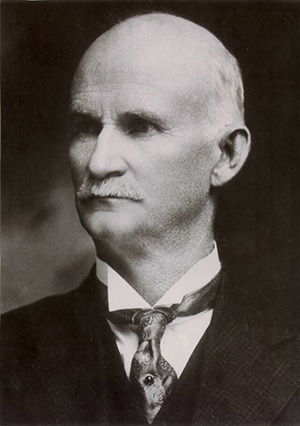
John Browning
Meanwhile, the .45 ACP (Automatic Colt Pistol) or .45 Auto handgun cartridge is about as American as apple pie. Legendary gun developer John Browning designed the prototype for a .45 ACP semi-automatic pistol in 1905, which featured a newly upgraded .45 ACP cartridge. Following successful military trials, .45 ACP was eventually adopted as the standard chambering for Colt’s M1911.
The improved stopping power of the .45 ACP Colt double-action revolver eventually made it the handgun of choice for the US Cavalry and later the US Army. .45 ACP handguns also served as the official sidearms of the United States Armed Forces during both World Wars, all the way up until 1985 when they were replaced the M9 9mm.
The .45 ACP has historically been praised for its stopping power. However, the .45 ACP has its shortcomings when compared to the 9mm—thus sparking the contentious debate between .45 ACP and the 9mm, which has carried on for decades.
(Check out the best .45 ACP pistols and the best .45 ACP ammo)
Comparing 9mm vs .45 ACP
9mm handguns have become some of the most popular firearms in the world thanks to their ease of use and their high capacity magazines.
Meanwhile, .45 ACP pistols, praised for their stopping power, has established a name for itself through some of the most trusted firearms in history, going back to the Colt M1911 all the way to the modern Glock G21 and Sig Sauer P220.
The added stopping power of the .45 ACP makes it an excellent home defense gun. And as we will touch on in the following section, the .45 ACP has also seen numerous improvements over the course of its century long history, making some .45 ACP handguns truly powerful.
Capacity and Concealment
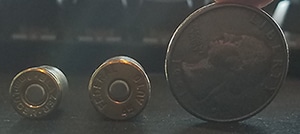
As mentioned above, when it comes to magazine capacity, the 9mm shines. Since the diameter of the 9mm round is smaller than the .45 ACP, stock 9mm magazine capacity typically ranges from 6-20 round cartridges, while .45 ACP magazine capacity typically ranges from 6-14. The Glock 17, for example, holds 17 9mm rounds, whereas the Glock 21 holds 13 .45ACP rounds.
The smaller size of 9mm rounds has also made them a natural choice for many concealed carriers. As touched on by the FBI analysis report, the 9mm has less recoil than the .45 ACP, making it an easier gun to handle for beginners in particular, especially when shooting it from a small and light firearm.
Velocity and Recoil
Traveling between 950-1400 FPS, the 9mm has a higher muzzle velocity in part due to its smaller diameter and lighter bullets. The higher velocity of the 9mm can also contributes to increased accuracy and to slightly better bullet expansion (as a percent increase).
However, the lower muzzle velocity of the .45 ACP has its advantages. It may only reach 700-1150 FPS, but the subsonic speeds of the .45 ACP make it an ideal choice for suppressed fire.
Bullet Penetration
Testing has shown that 9mm Luger rounds have deeper penetration than most other handgun calibers, and it compares quite closely to the larger .45 ACP.

Here we see that both the 9mm and .45 ACP successfully meet the 12” minimum penetration standard through ballistics gel, ensuring that vital organs can be penetrated with either caliber when used in a self defense scenario. Although it’s worth noting that the overall expansion of the .45ACP hollow points are on the whole going to be doing more damage than its 9mm counterparts. More on that shortly.
In tactical situations, the 9mm outperforms the .45 ACP when it comes to more consistent barrier penetration, meaning shooting through walls can be easier if necessary. This, however, does not generally apply to self-defense situations and is arguably a negative for this purpose. The 9mm has even developed a notorious reputation for over penetration. In this case, the shallower penetration of the .45 ACP, helps ensure over-penetration doesn’t occur, thereby mitigating the likelihood of unintentional damage being done to a bystander located somewhere behind the target.
Affordability
When it comes to affordability 9mm ammunition and sometimes even guns tend to be significantly cheaper than their 45. ACP counterparts. In many cases, 9mm ammunition can cost 2/3rds of what .45 ACP ammo costs for similar quantities.
See Here How You Can Save On Ammo By Buying it Online
Stopping Power
It’s worth noting that over the last 30 years, modern defensive ammo has improved dramatically, ameliorating some of the concerns typically associated with the stopping power of the 9mm in particular. In fact, 9mm fans sometimes make the case that the difference in power between the 9mm and .45 ACP is now negligible. But is this actually true?
Let’s take a look at the expansion on some of the modern hollow points for each caliber firearm. In cases of self defense, expansion is important because the increased diameter the bullet reaches on impact means more damage done to the target.
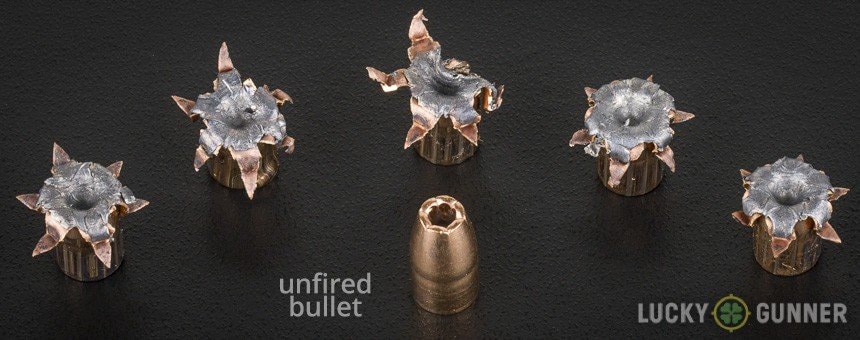
Depicted above, we see an example of the expansion of Winchester 147 gr Ranger T-Series. The roughly .35” 9mm round expands on average to 15mm or .74”, according to Lucky Gunner's tests.
Of course, these technological upgrades have added similar benefits to the .45 ACP. The image below depicts the roughly 11.5mm .45 ACP bullet expanding to an average 25mm, or .45” to 1”
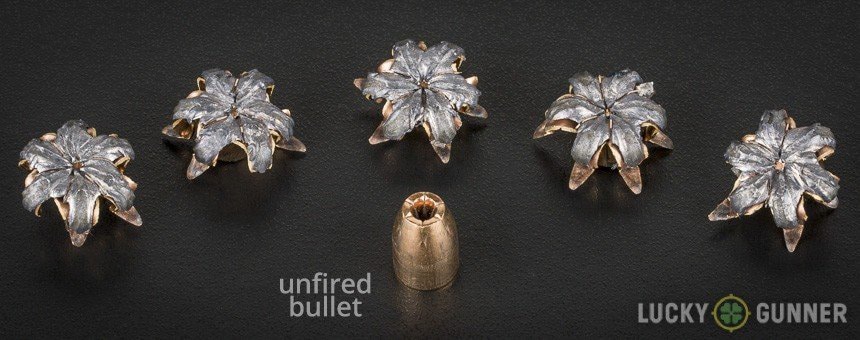
In both cases, each bullet roughly doubles in size. And it is indeed true that a .74” expansion puts to rest any notion that the modern 9mm is something of a pea shooter. However, with a 1” expansion, modern .45 ACP uniquely sets itself apart as a force to be reckoned with.
Case Studies in Stopping Power
While spec analysis has its place, what is arguably most important when comparing the 9mm and .45 ACP is how each has done in real world defensive scenarios.
In 2012, Primary Instructor and President of Active Training Response Greg Ellifritz published a lengthy analysis of stopping power, based on data collected from nearly 2000 shootings over a ten-year time period.
Using this information, Ellifritz was able to provide a look into the real world stopping power of a wide range of varying caliber ammunition, including the 9mm and .45 ACP. While Ellifritz admits that the data is by no means conclusive, studies like this are hard to come by, and nevertheless valuable. Here is what he found:
.45 ACP# of people shot – 209
# of hits – 436
% of hits that were fatal – 29%
Average number of rounds until incapacitation – 2.08
% of people who were not incapacitated – 14%
One-shot-stop % – 39%
Accuracy (head and torso hits) – 85%
% actually incapacitated by one shot (torso or head hit) – 51%
9mm Luger# of people shot – 456
# of hits – 1121
% of hits that were fatal – 24%
Average number of rounds until incapacitation – 2.45
% of people who were not incapacitated – 13%
One-shot-stop % – 34%
Accuracy (head and torso hits) – 74%
% actually incapacitated by one shot (torso or head hit) – 47%
We can see from the data provided that the .45 ACP was slightly more effective than the 9mm on most metrics. However, Ellifritz does make a special note that in his opinion the 9mm likely performs better in self-defense scenarios than the data suggest:
“One other thing to look at is the 9mm data. A huge number (over half) of 9mm shootings involved ball ammo. I think that skewed the results of the study in a negative manner. One can reasonably expect that FMJ ammo will not stop as well as a state of the art expanding bullet. I personally believe that the 9mm is a better stopper than the numbers here indicate, but you can make that decision for yourself based on the data presented.”
What’s also worth noting is that the average number of rounds until incapacitation between most firearms on average was very close. Ellifritz touches on this in his conclusion, adding that he would feel equally comfortable carrying a 9mm or a .45 based on the data.
“The results I got from the study lead me to believe that there really isn’t that much difference between most defensive handgun rounds and calibers. None is a death ray, but most work adequately…even the lowly .22s. I’ve stopped worrying about trying to find the ‘ultimate’ bullet. There isn’t one. And I’ve stopped feeling the need to strap on my .45 every time I leave the house out of fear that my 9mm doesn’t have enough “stopping power.” Folks, carry what you want. Caliber really isn’t all that important.”
Pros and Cons 9mm VS .45 ACP
9mm
Pros
- Compact
- Cheaper
- Increased capacity
- Higher muzzle velocity
- Low Recoil
- Respected barrier penetration
- FBI Study Suggests 9mm outperforms .45 ACP in the hands of most shooters
Cons
- Sacrificing stopping power for accuracy and capacity
- Risks of overpenetration
.45 ACP
Pros
- Greater stopping power
- Some studies indicate .45 ACP outperforms 9mm in real world scenarios
- An American classic
- Low velocity makes for an excellent choice for suppressed fire
- Less risk of over-penetration
- Greater Expansion
Cons
- Less capacity
- More expensive
- Larger and heavier build
- Not as beginner friendly
Conclusion
We’ve covered a great deal of information in this article, and hopefully have provided enough material to give you a clear sense of what to expect from the 9mm and .45 ACP. There are an endless number of variables you might consider when choosing between each caliber, and ultimately, as Ellifritz stated, the best advice is likely to do as you please after testing each out for yourself.
The 9mm is fast, compact, accurate, affordable and certainly capable of meeting the needs of any concealed carrier. It has also become the flagship caliber for leading law enforcement agencies like the FBI, as well as a mainstay for military branches across the world.
Meanwhile, the force and size of the .45 ACP will likely always be a draw to those seeking stopping power. And being a classic, .45 ACP carries with it a deep history which undoubtedly gives it a kind of intangible value freedom-loving Americans can’t help but appreciate.

